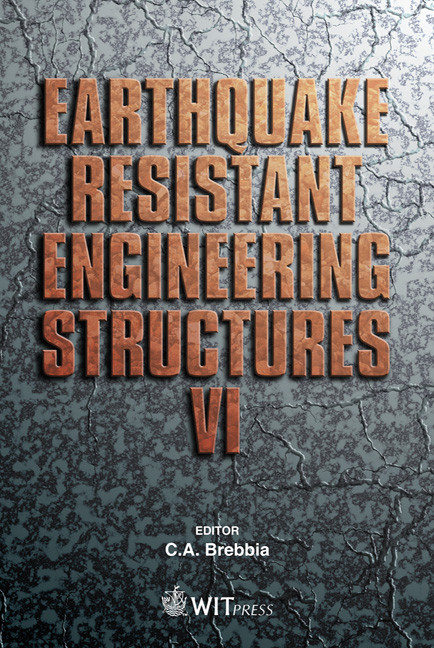Aseismic Study Of A Building With The Efficiency-enhanced Damping System
Price
Free (open access)
Transaction
Volume
93
Pages
9
Published
2007
Size
896 kb
Paper DOI
10.2495/ERES070141
Copyright
WIT Press
Author(s)
S. S. Ke, W. S. Li & B. J. Shih
Abstract
The objective of the present paper is to demonstrate the effectiveness of the efficiency-enhanced damping system (EDS) on the reduction of seismic vibrations of building structures with the device. Due to the limited damper stroke, the application of linear fluid dampers on buildings is restrained and dampers are usually installed as the diagonally auxiliary member. The EDS consists of linear fluid dampers and relatively rigid linking members to formulate a leverage mechanism for improving the capacity of damper efficiency by increasing the input velocity of the damper according to the arm ratio between the connecting lengths of the structural member and dampers. Through the adjustment of arm ratio, the input velocity of the damper will be magnified. Two principal topics are focused on in this paper: first, to theoretically and numerically identify the feasibility and effectiveness of the EDS on the improvement of aseismic capability of buildings; second, to verify the accuracy of results and the related limitations between the theoretical analysis and numerical simulation through shaking table experiments. From the experimental observation and simulation results, the damping ratio of building structures will be largely increased and the seismic responses of the model building will be obviously reduced by adopting the EDS. As a consequence, the heavily damped structure systems do show a lot of potential for this application in civil engineering. Keywords: efficiency-enhanced damping system, structure control, fluid damper, shaking table experiment, response spectrum analysis.
Keywords
efficiency-enhanced damping system, structure control, fluid damper, shaking table experiment, response spectrum analysis.





